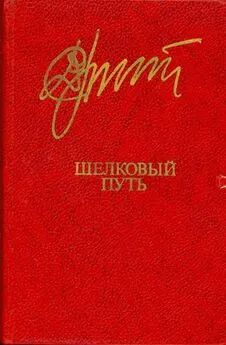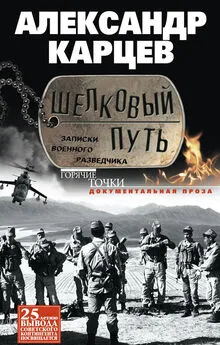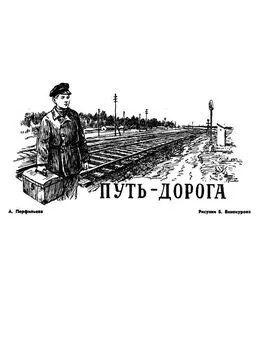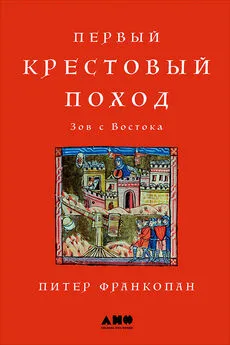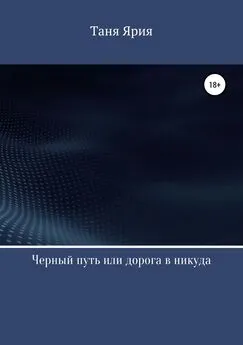Питер Франкопан - Шелковый путь. Дорога тканей, рабов, идей и религий
- Название:Шелковый путь. Дорога тканей, рабов, идей и религий
- Автор:
- Жанр:
- Издательство:Литагент 5 редакция
- Год:2017
- Город:Москва
- ISBN:978-5-699-95706-4
- Рейтинг:
- Избранное:Добавить в избранное
-
Отзывы:
-
Ваша оценка:
Питер Франкопан - Шелковый путь. Дорога тканей, рабов, идей и религий краткое содержание
Вы увидите, что история развивалась совсем не так, как мы привыкли изучать в школе. Так, столетия назад интеллектуальные центры мира, «Оксфорды» и «Кембриджи», «Гарварды» и «Йели», находились не в Европе, а в городах Средней Азии, куда и съезжалась вся просвещенная молодежь в поисках успеха.
Шелковый путь. Дорога тканей, рабов, идей и религий - читать онлайн бесплатно ознакомительный отрывок
Интервал:
Закладка:
731
Valtrovà, ‘Beyond the Horizons of Legends’, рр. 154–185.
732
William of Rubruck, The Mission of Friar William of Rubruck , tr. Р. Jackson, ed. D. Morgan (London, 1990), 28, р. 177.
733
Там же, 2, рр. 72, 76; 13, р. 108; Jackson, Mongols and the West , р. 140.
734
John of Plano Carpini, Sinica Franciscana: Itinera et relationes fratrum minorum saeculi XVII et XIV , ed. A. van den Wyngaert, 5 vols (Florence, 1929), 1, рр. 60, 73–75.
735
John of Plano Carpini, Ystoria Mongolarum , ed. A. van den Wyngaert (Florence, 1929), рр. 89–90.
736
‘Letter of the Great Khan Güyüg to Pope Innocent IV (1246)’, in I. de Rachewiltz, Papal Envoys to the Great Khans (Stanford, 1971), р. 214 (с отличиями).
737
C. Dawson, Mongol Mission: Narratives and Letters of the Franciscan Missionaries in Mongolia and China in the Thirteenth and Fourteenth Centuries (London, 1955), рр. 44–45.
738
Р. Jackson, ‘World-Conquest and Local Accommodation: Threat and Blandishment in Mongol Diplomacy’, in J. Woods, J. Pfeiffer, S. Quinn and E. Tucker (eds), History and Historiography of Post-Mongol Central Asia and the Middle East: Studies in Honor of John E. Woods (Wiesbaden, 2006), рр. 3–22.
739
R. Thomson, ‘The Eastern Mediterranean in the Thirteenth Century: Identities and Allegiances. The Peripheries; Armenia’, in Herrin and Saint-Gobain, Identities and Allegiances , рр. 202–204.
740
J.-L. van Dieten, ‘Das Lateinische Kaiserreich von Konstantinopel und die Verhandlungen über kirchliche Wiedervereinigung’, in V. van Aalst and K. Ciggaar (eds), The Latin Empire: Some Contributions (Hernen, 1990), рр. 93–125.
741
Wiliam of Rubruck, Mission of Friar William , 33, р. 227.
742
George Pachymeres, Chronicon , ed. and tr. A. Faillier, Relations historiques , 2 vols (Paris, 1984), 2, рр. 108–109; J. Langdon, ‘Byzantium’s Initial Encounter with the Chinggisids: An Introduction to the Byzantino-Mongolica’, Viator 29 (1998), рр. 130–133.
743
Abdallāh b. Faḍlallāh Waṣṣāf, Tarjiyat al-amṣār wa-tajziyat al-a ʿ ṣār , in Spuler, History of the Mongols , рр. 120–121.
744
Allsen, Commodity and Exchange , рр. 28–29.
745
J. Richard, ‘Une Ambassade mongole à Paris en 1262’, Journal des Savants 4 (1979), рр. 295–303; Jackson, Mongols and the West , р. 123.
746
N. Nobutaka, ‘The Rank and Status of Military Refugees in the Mamluk Army: A Reconsideration of the Wāfidīyah ’, Mamluk Studies Review 10.1 (2006), рр. 55–81; R. Amitai-Preiss, ‘The Remaking of the Military Elite of Mamluk Egypt by al-Nāṣir Muḥammad b. Qalāwūn’, Studia Islamica 72 (1990), рр. 148–150.
747
Р. Jackson, ‘The Crisis in the Holy Land in 1260’, English Historical Review 95 (1980), рр. 481–513.
748
R. Amitai-Preiss, Mongols and Mamluks: The Mamluk-Ilkhanid War, 1260–1281 (Cambridge, 1995).
749
Jūzjānī, Tabaḳāt-i-Nāṣirī , tr. H. Raverty, A general history of the Muhammadan dynasties of Asia, including Hindūstān, from 810 A.D. to 1260 A.D., and the irruption of the infidel Mugẖ̱als into Islam (Calcutta, 1881), 23.3–4, рр. 1104, 1144–1145.
750
L. Lockhart, ‘The Relations between Edward I and Edward II of England and the Mongol Il-Khans of Persia’, Iran 6 (1968), 23. О экспедиции – C. Tyerman, England and the Crusades, 1095–1588 (London, 1988), рр. 124–132.
751
W. Budge, The Monks of Kublai Khan, Emperor of China (London, 1928), рр. 186–187.
752
S. Schein, ‘Gesta Dei per Mongolos 1300: The Genesis of a Non-Event’, English Historical Review 94.272 (1979), рр. 805–819.
753
R. Amitai, ‘Whither the Ilkhanid Army? Ghazan’s First Campaign into Syria (1299–1300)’, in di Cosmo, Warfare in Inner Asian History , рр. 221–264.
754
Стихотворение Уильяма Блейка «Иерусалим». Легенды об Иосифе Аримафейском, посетившем Британские острова, распространились в Англии со времен Средневековья, W. Lyons, Joseph of Arimathea: A Study in Reception History (Oxford, 2014), рр. 72–104.
755
S. Karpov, ‘The Grain Trade in the Southern Black Sea Region: The Thirteenth to the Fifteenth Century’, Mediterranean Historical Review 8.1 (1993), рр. 55–73.
756
A. Ehrenkreutz, ‘Strategic Implications of the Slave Trade between Genoa and Mamluk Egypt in the Second Half of the Thirteenth Century’, in A. Udovitch (ed.), The Islamic Middle East, 700–1900 (Princeton, 1981), рр. 335–343.
757
G. Lorenzi, Monumenti per servire alla storia del Palazzo Ducale di Venezia. Parte I: dal 1253 al 1600 (Venice, 1868), р. 7.
758
‘Anonimo genovese’, in G. Contini (ed.), Poeti del Duecento , 2 vols (Milan, 1960), 1, рр. 751–759.
759
V. Cilocitan, The Mongols and the Black Sea Trade in the Thirteenth and Fourteenth Centuries (Leiden, 2012), рр. 16, 21; S. Labib, ‘Egyptian Commercial Policy in the Middle Ages’, in M. Cook (ed.), Studies in the Economic History of the Middle East (London, 1970), р. 74.
760
См. D. Morgan, ‘Mongol or Persian: The Government of Īl-khānid Iran’, Harvard Middle Eastern and Islamic Review 3 (1996), рр. 62–76, и, главным образом, Lane, Early Mongol Rule in Thirteenth-Century Iran .
761
G. Alef, ‘The Origin and Development of the Muscovite Postal System’, Jahrbücher für Geschichte Osteuropas 15 (1967), рр. 1–15.
762
Morgan, The Mongols , рр. 88–90; Golden, ‘Činggisid Conquests’, рр. 38–40; T. Allsen, Mongol Imperialism: The Policies of the Grand Qan Möngke in China, Russia and the Islamic Lands, 1251–1259 (Berkeley, 1987), рр. 189–216.
763
Juvaynī, History of the World Conqueror , 3, 1, р. 26.
764
Согласно докладам путешественников, этот процесс начался уже в середине тринадцатого века, G. Guzman, ‘European Clerical Envoys to the Mongols: Reports of Western Merchants in Eastern Europe and Central Asia, 1231–1255’, Journal of Medieval History 22.1 (1996), рр. 57–67.
765
William of Rubruck, Mission of Friar William , 35, рр. 241–242.
766
J. Ryan, ‘Preaching Christianity along the Silk Route: Missionary Outposts in the Tartar “Middle Kingdom” in the Fourteenth Century’, Journal of Early Modern History 2.4 (1998), рр. 350–373. О Персии – R. Lopez, ‘Nuove luci sugli italiani in Estremo Oriente prima di Colombo’, Studi Colombiani 3 (1952), рр. 337–398.
767
Dawson, Mission to Asia , рр. 224–226; de Rachewiltz, Papal Envoys , рр. 160–178; а также J. Richard, La Papauté et les missions d’Orient au moyen age (XIIIe – XVe siècles) (Rome, 1977), р. 144ff. Иоанн нападал на несторианцев за то, что они обвиняли его в шпионаже и колдовстве. Соперники схлестнулись в Китае так же, как до того в Персии.
768
Р. Jackson, ‘Hülegü Khan and the Christians: The Making of a Myth’, in J. Phillips and Р. Edbury (eds), The Experience of Crusading , 2 vols (Cambridge, 2003), 2, рр. 196–213; S. Grupper, ‘The Buddhist Sanctuary-Vihara of Labnasagut and the Il-qan Hülegü: An Overview of Il-Qanid Buddhism and Related Matters’, Archivum Eurasiae Medii Aevi 13 (2004), рр. 5–77; Foltz, Religions of the Silk Road , р. 122.
769
S. Hackel, ‘Under Pressure from the Pagans? – The Mongols and the Russian Church’, in J. Breck and J. Meyendorff (eds), The Legacy of St Vladimir: Byzantium, Russia, America (Crestwood, NY, 1990), рр. 47–56; C. Halperin, ‘Know Thy Enemy: Medieval Russian Familiarity with the Mongols of the Golden Horde’, Jahrbücher für Geschichte Osteuropas 30 (1982), рр. 161–175.
770
D. Ostrowski, Muscovy and the Mongols: Cross-Cultural Influences on the Steppe Frontier, 1304–1589 (Cambridge, 1998); M. Bilz-Leonardt, ‘Deconstructing the Myth of the Tartar Yoke’, Central Asian Survey 27.1 (2008), рр. 35–36.
771
R. Hartwell, ‘Demographic, Political and Social Transformations of China, 750–1550’, Harvard Journal of Asiatic Studies 42.2 (1982), рр. 366–369; R. von Glahn, ‘Revisiting the Song Monetary Revolution: A Review Essay’, International Journal of Asian Studies 1.1 (2004), р. 159.
772
Например, G. Wade, ‘An Early Age of Commerce in Southeast Asia, 900–1300 CE’, Journal of Southeast Asia Studies 40.2 (2009), рр. 221–265.
773
S. Kumar, ‘The Ignored Elites: Turks, Mongols and a Persian Secretarial Class in the Early Delhi Sultanate’, Modern Asian Studies 43.1 (2009), рр. 72–76.
774
Р. Buell, E. Anderson and C. Perry, A Soup for the Qan: Chinese Dietary Medicine of the Mongol Era as Seen in Hu Szu-hui’s Yin-shan Cheng-yao (London, 2000).
775
Р. Buell, ‘Steppe Foodways and History’, Asian Medicine, Tradition and Modernity 2.2 (2006), рр. 179–180, 190.
776
Р. Buell, ‘Mongolian Empire and Turkization: The Evidence of Food and Foodways’, in R. Amitai-Preiss (ed.), The Mongol Empire and its Legacy (Leiden, 1999), рр. 200–223.
777
Allsen, Commodity and Exchange , рр. 1–2, 18; J. Paviot, ‘England and the Mongols (c. 1260–1330)’, Journal of the Royal Asiatic Society 10.3 (2000), рр. 317–318.
778
Р. Freedman, ‘Spices and Late-Medieval European Ideas of Scarcity and Value’, Speculum 80.4 (2005), рр. 1209–1227.
779
S. Halikowski-Smith, ‘The Mystification of Spices in the Western Tradition’, European Review of History: Revue Européenne d’Histoire 8.2 (2001), рр. 119–125.
Читать дальшеИнтервал:
Закладка:


